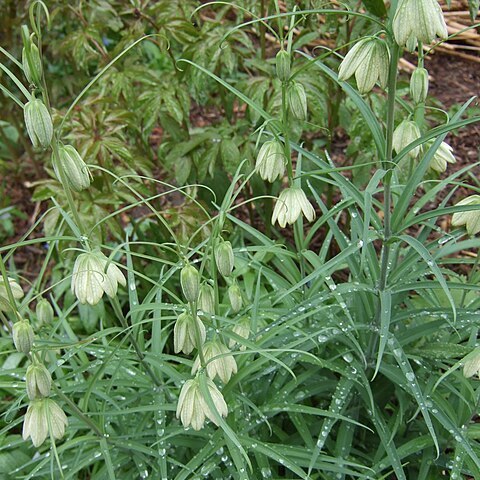A bulb plant. The bulb has 2 or 3 scales. It is oval and 1-3 cm across. The stem is 15-80 cm high. There are 12-20 leaves which are alternate or in rings. The leaf blade is long and narrow. It is 7-11 cm long by 1-2.5 cm wide. There are 1-6 flowers in the flower arrangement. The flowers are nodding. They are yellow sometimes tinged with purple. The fruit is a capsule with broad wings. The wings are 6-8 mm wide.

